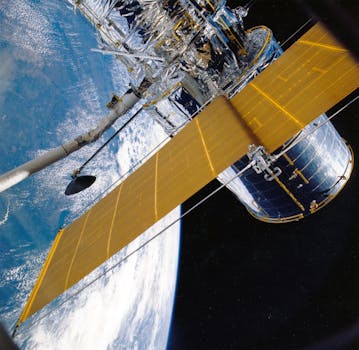Navigating Change: The Latest Trends in Satellite Telecommunications and Their Impact

Navigating Change: The Latest Trends in Satellite Telecommunications and Their Impact
Navigating Change: The Latest Trends in Satellite Telecommunications and Their Impact is a crucial aspect of the rapidly evolving telecommunications industry. The latest trends in satellite telecommunications are revolutionizing the way we communicate, with advancements in technology and innovations in services. Satellite telecommunications play a vital role in connecting remote and underserved areas, providing critical communication services for emergency response, navigation, and weather forecasting. In this article, we will explore the current state of satellite telecommunications and its impact on various industries.
The satellite telecommunications industry has experienced significant growth in recent years, driven by the increasing demand for satellite-based services. The launch of new satellite constellations, such as OneWeb and Starlink, has expanded the availability of satellite internet services, providing high-speed connectivity to remote and underserved areas. These constellations are designed to provide low-latency, high-throughput services, making them ideal for applications such as video streaming, online gaming, and cloud computing.
Advancements in Technology
Advances in technology have been a key driver of the growth in satellite telecommunications. The development of new satellite designs, such as small satellites and cube satellites, has reduced the cost of launching and operating satellites. These smaller satellites are more efficient and cost-effective, making them ideal for a wide range of applications, from earth observation to communication services. Additionally, the use of advanced materials and propulsion systems has improved the performance and lifespan of satellites, reducing the need for frequent replacements and minimizing the risk of satellite failures.
The adoption of new technologies, such as 5G and the Internet of Things (IoT), is also driving growth in the satellite telecommunications industry. The integration of satellite communications with 5G networks will enable the provision of seamless, high-speed connectivity services, even in areas where terrestrial networks are not available. The use of satellites for IoT applications, such as smart cities and industrial automation, will also become more prevalent, as the need for reliable, low-latency connectivity grows.
Impact on Industries
The impact of satellite telecommunications on various industries cannot be overstated. In the maritime industry, satellite communications are used for navigation, weather forecasting, and emergency response. The use of satellite-based services, such as the Global Maritime Distress and Safety System (GMDSS), has improved safety at sea and reduced the risk of accidents. In the aviation industry, satellite communications are used for air traffic control, navigation, and weather forecasting, ensuring safe and efficient flight operations.
In the healthcare industry, satellite telecommunications are used for telemedicine, enabling remote consultations and medical services. This has improved access to healthcare services, particularly in remote and underserved areas. The use of satellite-based services, such as satellite imaging, has also improved disease surveillance and outbreak response, enabling healthcare professionals to respond quickly and effectively to emerging health crises.
Challenges and Opportunities
Despite the many benefits of satellite telecommunications, there are challenges that need to be addressed. The increasing demand for satellite-based services has led to concerns about congestion in the radio frequency spectrum, which could impact the quality and reliability of satellite communications. The growth of satellite constellations has also raised concerns about space debris and the potential for collisions, which could have significant consequences for the satellite industry.
However, these challenges also present opportunities for innovation and growth. The development of new technologies, such as advanced propulsion systems and debris removal systems, will be critical in addressing these challenges. The adoption of sustainable practices, such as the use of green propulsion systems and the minimization of waste, will also be essential in reducing the environmental impact of satellite operations.
In conclusion, navigating change: the latest trends in satellite telecommunications and their impact is a complex and multifaceted issue. The satellite telecommunications industry is rapidly evolving, driven by advances in technology and innovations in services. While there are challenges that need to be addressed, the opportunities for growth and innovation are significant. As the industry continues to evolve, it is essential that we prioritize sustainability, innovation, and collaboration to ensure that the benefits of satellite telecommunications are available to all.



